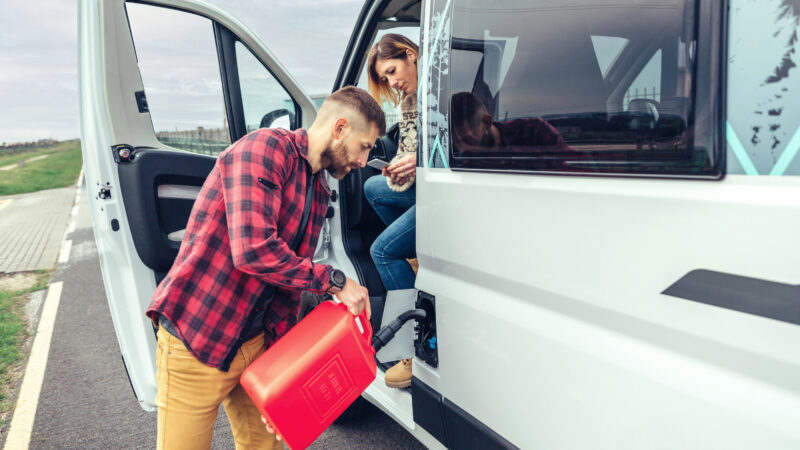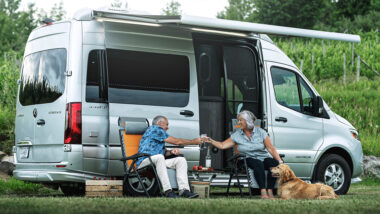Table of Contents Show
RVing comes with a lot of additional costs. The upfront purchase of a rig is just the starting point. You also need all the camping essentials, maintenance, and repairs that add up over time.
In addition, RV gas mileage affects fuel costs. This might even eliminate certain types or sizes of RVs as you search.
Fuel will be a big-ticket item when establishing a budget for your RV adventures. Understanding RV gas mileage and the differences between RV classes will help you estimate how much you’ll spend on fuel.
Let’s dive in and learn more about fuel efficiency and RV life!
What Is the Average MPG for an RV?
The average miles per gallon depends on the RV. Class A is the least fuel-efficient, averaging between 6-12 MPG.
Then Class C motorhomes average between 10-18 MPG.
Class Bs have the best fuel efficiency because of their small size and weight. They’ll get anywhere from 16-25 MPG.
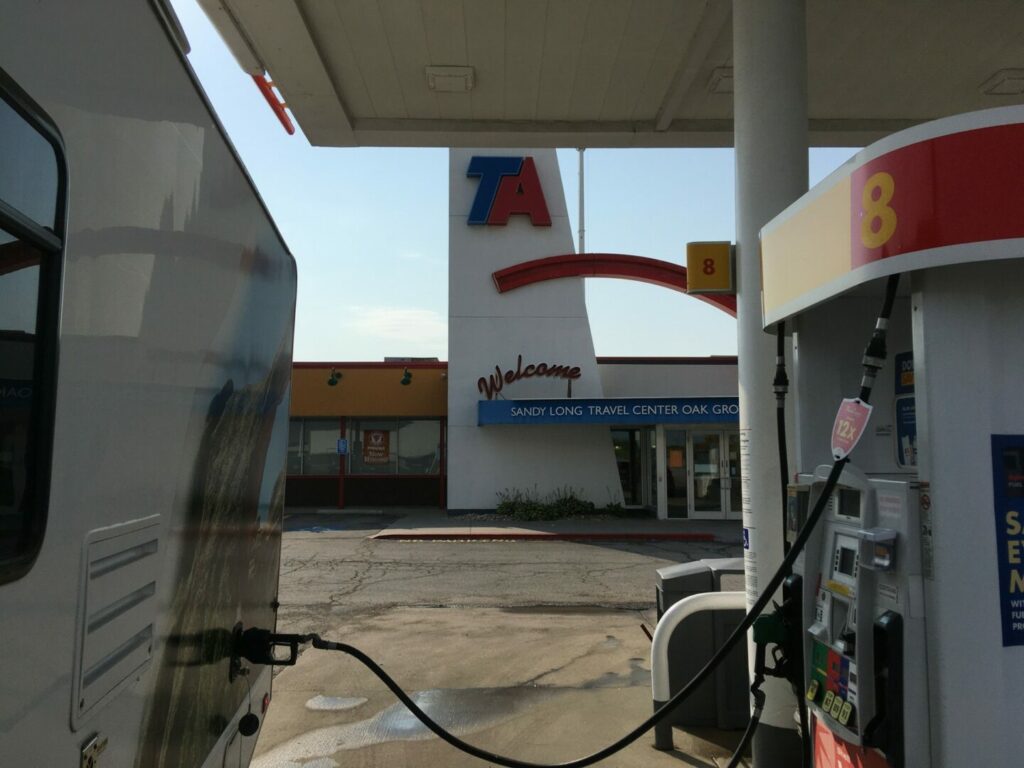
How Many Miles Can an RV Go on a Tank of Gas?
Between the three motorized RVs, the fuel efficiency and fuel tank capacities vary tremendously.
A Class A may have the least fuel efficiency but might have the largest fuel tank. This means it can travel farther on a tank of gas than a smaller Class B, even though the van is more fuel-efficient.
A 100-gallon fuel tank that gets 8 MPG can go 800 miles before refilling. However, a 25-gallon fuel tank with 16 MPG can only travel half that far.
A Class C sits somewhere in between with a 60-gallon fuel tank. If you get 14 MPG, you can travel about 640 miles between fill-ups.
Which Is Better, Gas or Diesel RV?
Diesel fuel will cost more in the short term. But if you plan on traveling for years, a diesel RV will get better gas mileage in the long run.
Typically, a Class A diesel pusher gets better gas mileage at 8-16 MPG. Where your RV falls in that range will determine your fuel savings.
For example, a gas Class A might get 10 MPG, and a diesel Class A might get 14 MPG. With a 100-gallon fuel tank, the gas Class A will travel around 1,000 miles before heading back to a fuel station. The diesel Class A will travel about 400 more miles before returning to the pump.
Keep in mind that diesel fuel currently costs about $1 more per gallon than gasoline. So when deciding whether or not to get a diesel or a gas engine, consider the long-term cost and the field efficiency.
Keep in Mind: Diesel vs Gas has been a long-time debate. Read Is a Diesel or Gas Truck Better to learn more!
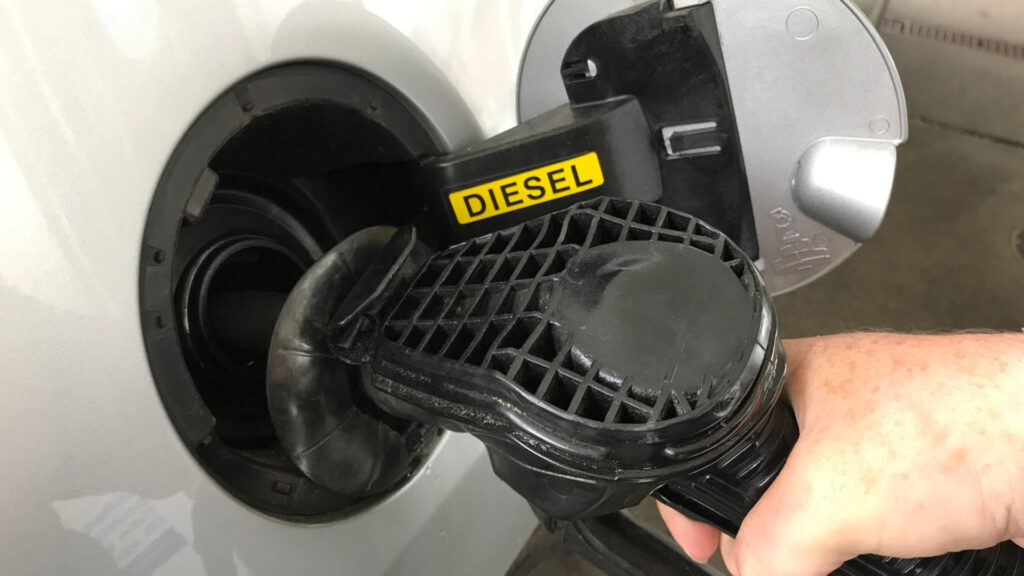
What Affects an RV’s Gas Mileage?
The larger and heavier the RV, the lower the fuel efficiency. This is why Class As have such a low MPG rating compared to Class Bs. Even within the same class, the gas mileage will vary.
A 22,000 lb 40 ft Class A may only get 6 MPG, whereas a 17,000 lb 30 ft Class A may get up to 10 MPG.
RV gas mileage will increase on shorter and lighter rigs and decrease on longer and heavier ones.
Speed also affects RV gas mileage. The sweet spot for fuel efficiency is between 55-60 MPH. Driving faster or slower will decrease fuel efficiency.
Lots of stop-and-go traffic will also reduce fuel efficiency.
Weather conditions will also impact gas mileage. Sometimes this is a result of changing speeds, like in heavy rain. Other times you’ll come across windy conditions.
Driving into the wind will create more friction, and you’ll get fewer miles per gallon. On the other hand, having a tailwind pushing behind you will increase your MPG.
Pro Tip: We all know gas prices have been crazy recently! Here are 5 Ways to Get Better Gas Mileage.
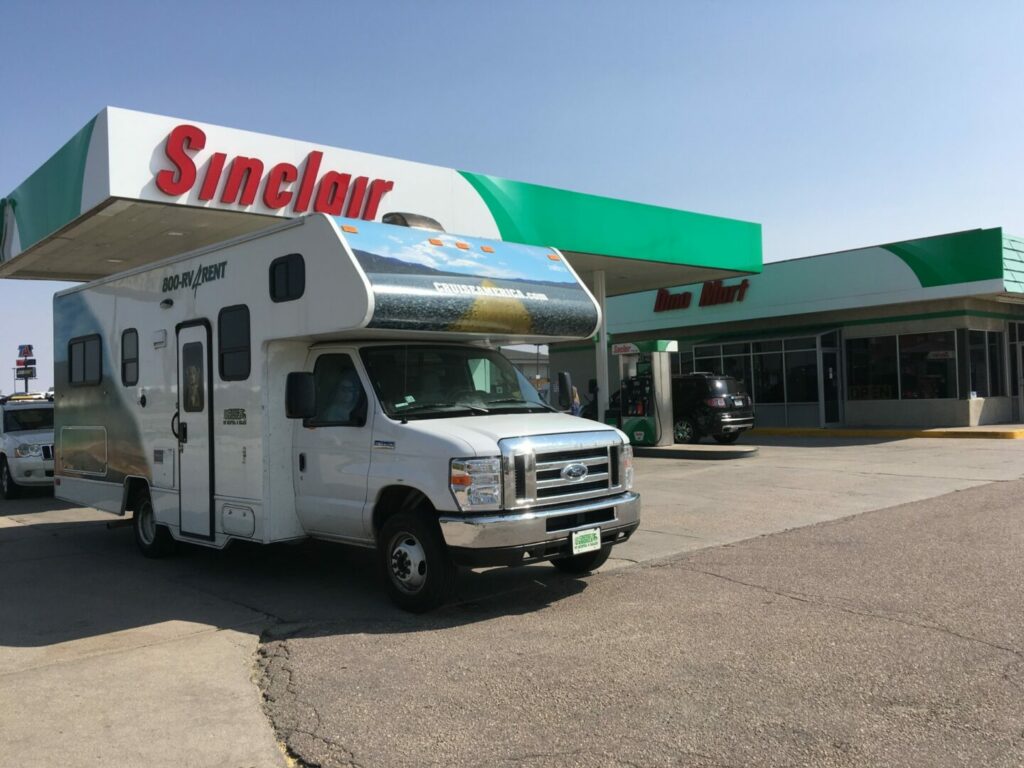
How Much Does It Cost to Fill Up an RV Gas Tank?
If you have a 100-gallon fuel tank and fill up with gasoline at $4.50 per gallon, one fill-up will cost $450.
If you have the same size fuel tank and fill up with diesel at $5.50 per gallon, one fill-up will cost $550.
Keep in mind that you can drive approximately 400 more miles with the diesel pusher.
Smaller RVs like a Class C with a 60-gallon fuel tank will cost less. At $4.50 per gallon, you can fill up for $270. A Class B with a 25-gallon fuel tank will cost you $112.50 per visit.
However, you’ll need to fill up more often because of the smaller fuel tank.
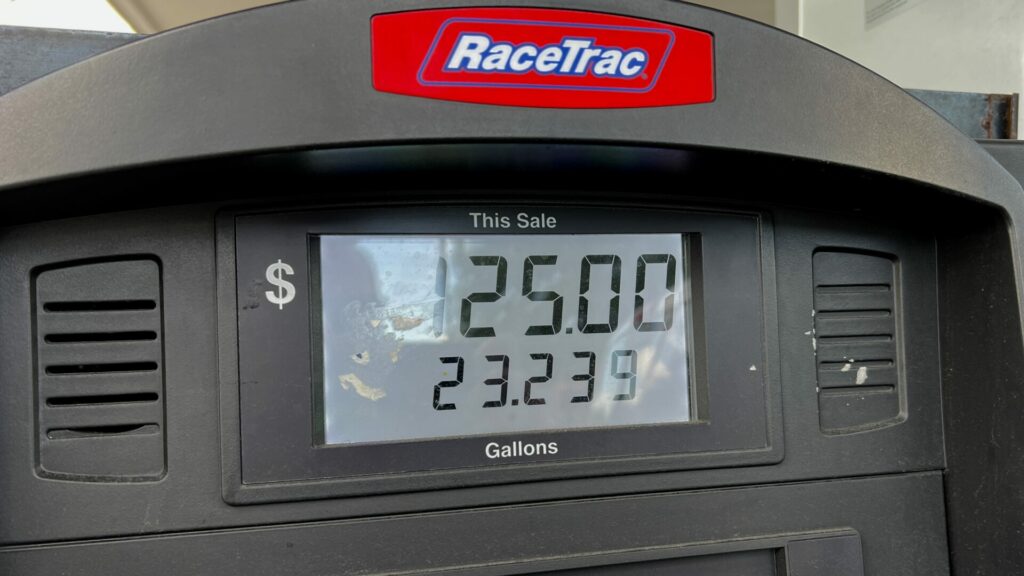
How Can You Decrease Your RV Gas Mileage?
You might think you don’t have much control over your RV gas mileage, but that’s not completely true.
Maintaining a speed of 55-60 MPH, avoiding driving during windy and rainy conditions, and keeping your rig as light as possible will increase your fuel efficiency.
If you travel full-time, having a lighter RV may not be feasible. But you can control your speed.
You can’t always avoid weather conditions. But when possible, leave a day earlier or a day later to reduce your chances of having to drive into heavy rains or high winds.
If you have a motorized RV, how many miles per gallon do you get? Have you discovered any other tricks to help increase fuel efficiency?




